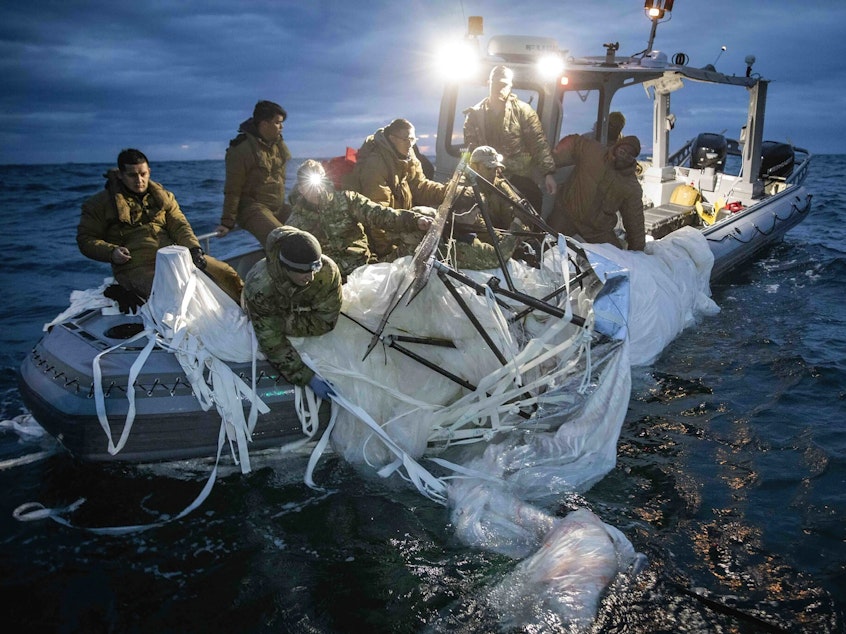What we know so far about the suspected Chinese spy balloon and FBI probe

As U.S. Navy crews continue to fish parts of the alleged Chinese spy balloon out of the Atlantic, a senior State Department official, who spoke on condition of anonymity, gave reporters an update on Thursday on some of what has been learned so far.
Here's what the official had to say:
China has sent surveillance balloons over more than 40 countries across five continents, and the Biden administration is in touch with other countries about the scope of the program.
High-resolution imagery from U-2 flybys showed that the balloon was "capable of conducting signals intelligence collection operations," and that its equipment was "inconsistent" with that of weather balloons.
The balloons are part of what the official called a fleet of balloons developed to conduct surveillance, and flights are often undertaken at the direction of the Chinese military.
Sponsored
The U.S. has identified what it believes to be the manufacturer of the balloons, and says it's an "approved vendor" of China's People's Liberation Army (PLA).
The U.S. will look into taking action against "entities linked to the PLA" that supported the balloon's incursion into U.S. airspace.
The FBI is involved
The FBI is also involved in the recovery effort. Bureau personnel have begun processing and analyzing an "extremely limited" amount of evidence recovered from the Chinese balloon, two senior FBI officials said Thursday.
The officials, who spoke to reporters on the condition of anonymity, said the U.S. has only collected materials that were on the ocean's surface so far, including the balloon canopy, some wiring and a "very small amount of electronics."
Sponsored
The main electronics payload, however, has not been recovered yet, one of the FBI officials said, adding that it was "very early" to assess what the intent was and how the device was operating.
The first bits of evidence recovered from the scene were transported to FBI facilities at Quantico late Monday evening, the officials said.
China insisted it's an "unmanned civilian airship"
On Thursday, Chinese Foreign Ministry spokeswoman, Mao Ning, repeated Beijing's assertion that the balloon was an "unmanned Chinese civilian airship," that it strayed into U.S. airspace by accident and that shooting it out of the sky was an overreaction on the part of the United States.
"That narrative is probably part of the information and public opinion warfare the U.S. has waged on China," Mao added. "As to who is the world's number one country of spying, eavesdropping and surveillance, that is plainly visible to the international community."
Sponsored
She declined to comment on the equipment on board the balloon and the entities that own the balloon. Chinese statements have implied that the balloon was not operated by a government entity, but instead was linked to one or more companies. It has not named them.
What do we know about China's balloon capabilities?
Open-source information from China suggests its military-linked balloon program is robust.
State media reports reviewed by NPR show some of China's balloons are part of the country's hypersonic weapons program, and are used to measure wind and other meteorological conditions for the missiles.
Others may be used for ground surveillance; academic papers describe how to attach radar systems onto balloons to map targets on Earth.
Sponsored
And the government is investing in improvements, too. In 2018, for example, China launched a project to research materials that can be used to make balloons that can float higher without losing buoyancy.
Emily Feng contributed reporting. [Copyright 2023 NPR]
